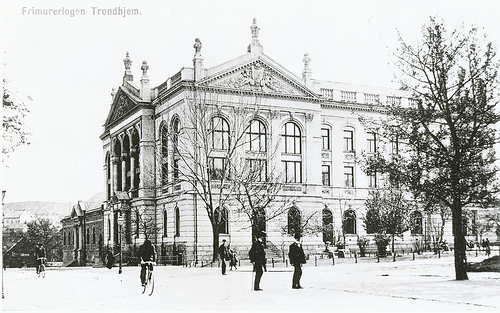
Editor’s note: Quantitative Easing (QE) is a monetary practice that many central banks had to resort to, and are still using, to prevent the monetary supply falling and to stimulate the economy. This is rather controversial and debates – political and financial – are taking place in many countries. This article by Nick Sudbury discusses the situation in the US but it has much wider relevance.
September’s meeting of the Federal Open Markets Committee was one of the most closely monitored events of the year. Most market commentators had been expecting the Fed to start to taper its asset purchasing programme, so it was a real surprise when it decided to delay the reduction.
The markets reacted positively to the news with the main American indices, the Dow Jones and the S&P 500, both hitting record highs, as did the Russell 2000 small cap index. Gold also rose, while US bond yields and the dollar weakened.
The committee voted 9 to 1 in favour of leaving the bond purchasing programme unchanged and said that it plans to “to wait a bit longer” for confirming evidence of a recovery. It also downgraded its growth forecasts to 2.2% for 2013 and 3% for 2014 compared with the June forecasts of 2.5% and 3.3% respectively.
Surprised and confused
Many fund managers were surprised by the decision. Some think it is a reflection of the fragility of the US recovery, while others see it as a missed opportunity. Gareth Lewis, CIO at Bestinvest, was particularly critical and is concerned because it could result in asset price bubbles like those that created the financial crisis in the first place.
One of the main beneficiaries of the announcement was the Emerging Markets. Investors had been withdrawing money from the region and returning it to the US so as to benefit from the expected increase in interest rates and the likely appreciation of the dollar. These capital outflows had been creating problems for many developing countries but they now have longer to sort them out.
The key question going forwards is what the delay will mean for the markets. One view is that it will increase the volatility as investors are unsure when the Fed will start to taper. Some think that it will be the December meeting, but until then, all announcements on the state of the US economy will be even more closely scrutinised than normal.
A poll of economists conducted by Reuters shows how confused professional investors have become. Nine of the 17 firms questioned thought that the tapering might be announced on December 12th. One thought October and another the first quarter of 2014, with the second quarter also getting a vote. The other 5 were undecided.
Chicken
One of the main problems is the US austerity programme that was introduced to help get their government deficit under control. The higher taxes and government spending cuts are working against the monetary stimulus and threatening the recovery. Unless Congress authorises more borrowing the worst case scenario is that the government could run out of cash and default on its debt.
Unfortunately, the whole bond buying programme has changed the normal market dynamics. The harsh reality is that the Fed delay is no reason to celebrate because it suggests that the US economy is not as strong as it should be after 5 years of monetary stimulus.
Stewart Cowley, manager of the Old Mutual Global Strategic Bond fund, believes that the market reaction shows how hooked on the stimulus the US economy still is and that the delay will make the eventual day of reckoning even worse for the markets. It has made investing in US government bonds particularly risky.
He is quoted on Interactive Investor as saying: “I suspect the euphoria won’t last long; we are now engaged in the biggest game of ‘Chicken’ the world has ever seen − investing in US government bonds has become the equivalent of running into the middle of the motorway to pick up pennies.”
They all lived happily ever after
One of the main reasons that the Fed decided to delay was the increase in interest rates following their announcement in June that they would soon begin to taper. The committee members were worried because: “The tightening of financial conditions observed in recent months, if sustained, could slow the pace of improvement in the economy and labour market.”
When the tapering was first suggested it sparked a major market sell-off, with shares, bonds and gold all falling sharply. The impact was particularly extreme in the US bond markets, which are normally pretty stable. StatPro, a portfolio analysis company, put out an interesting analysis, assessing the impact in detail and gives us an idea of what we can expect if the situation gets out of control.
If all goes to plan the Fed estimates that US interest rates would go up to 1% by the end of 2015 and 2% by the end of 2016. Chairman, Ben Bernanke, says that rates will then “gradually rise for the two or three years after 2016 and ultimately get to 4%,” by which time he expects the economy to be close to full employment. Let’s hope he is right.
photo credit: Trondheim Byarkiv via photopin cc